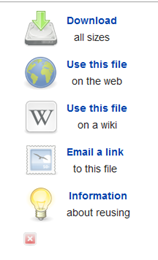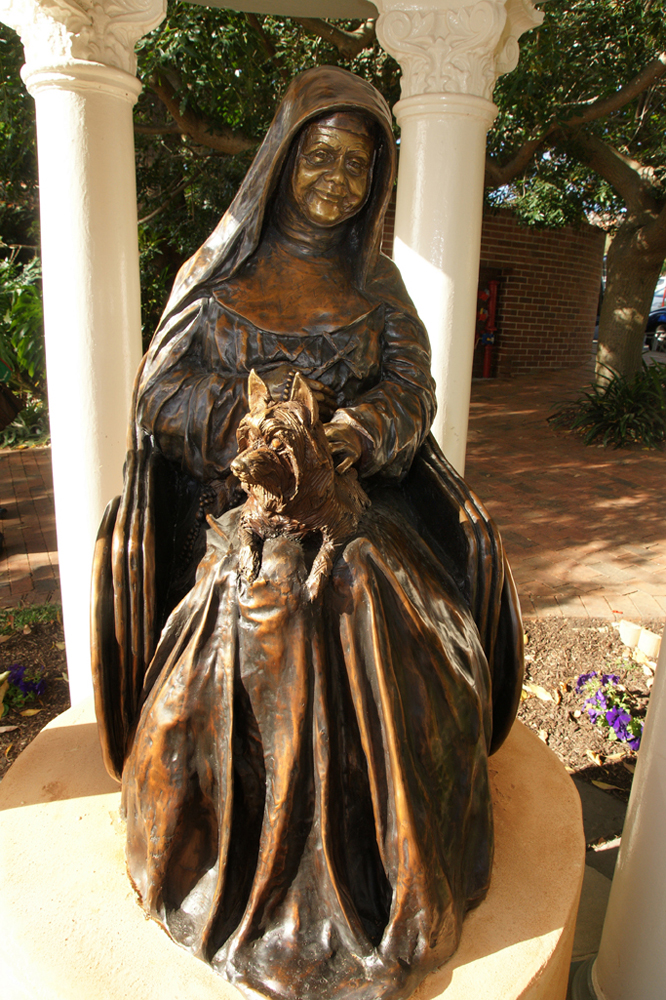Some content hosts, such as Flickr and YouTube, will allow you to embed their content directly into your webpage or LEO unit. Put simply, this means that rather than downloading your content onto your computer, and then reuploading it into LEO, the content only exists in one place. When you embed content directly from the original host, all of the metadata remains in tact, meaning that often the attribution will be done for you!
Most content hosts (YouTube, Vimeo, Flickr, Wikimedia Commons) will allow you to embed their content. As an example of how this works, we will show you how to embed an image you have sourced from Wikimedia Commons.
 To embed content directly from Wikimedia Commons you need to:
To embed content directly from Wikimedia Commons you need to:
- Locate your image from within Wikimedia Commons. Click on the blue 'More details' button.
- To the right of the image there will be four buttons. These represent the options which are available to you. These are 'Download' (to save the image to your computer); 'Use this file on the web'; 'Use this file on a wiki', 'Email a link to this file' and 'Information about reusing'. Click on 'Use this file on the web'.
- You will be presented with four ways of using this image on the web: a page URL (a direct link to the page); a file URL (a direct link to the file itself); an Attribution Link; and the HTML or BB Code. For most websites you will need HTML code.
- Generate the attribution code, by selecting the 'HTML' check box next to attribution code. Copy and paste this HTML code into your webpage or LEO unit.
- Select the size of your embedded image from the dropdown above the HTML code. Then copy and paste the HTML code into the same space that you put your attribution HTML code.
This is an example of how an embedded image from Wikimedia Commons will be displayed. Anyone who clicks on your image will be taken straight to the source, which in this case is the Wikimedia Commons website. All of the appropriate attributions are embedded in the attribution link at the bottom of the image.

By Anil Alfa (Own work) [CC BY-SA 3.0], via Wikimedia Commons



 To embed content directly from
To embed content directly from 